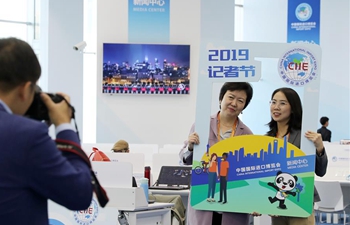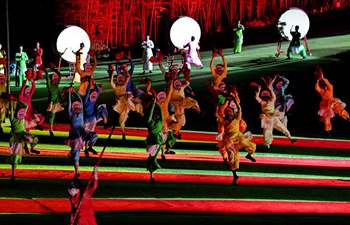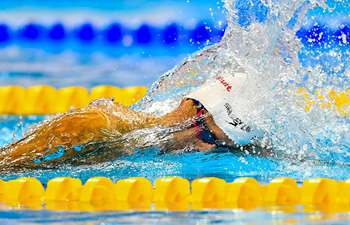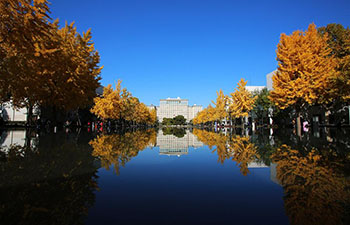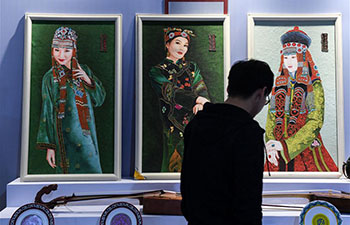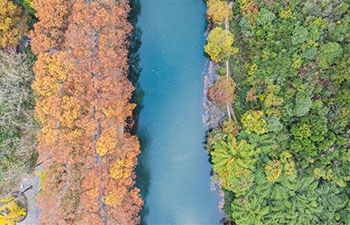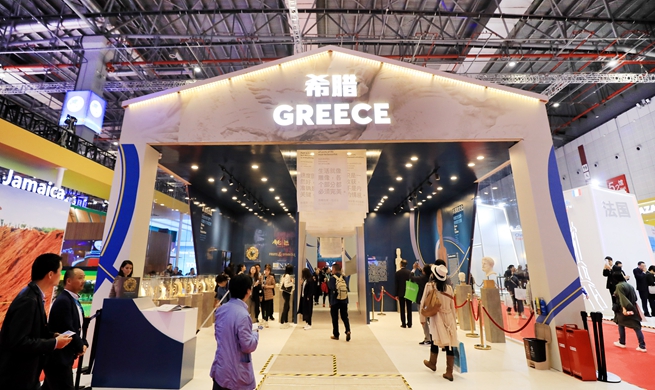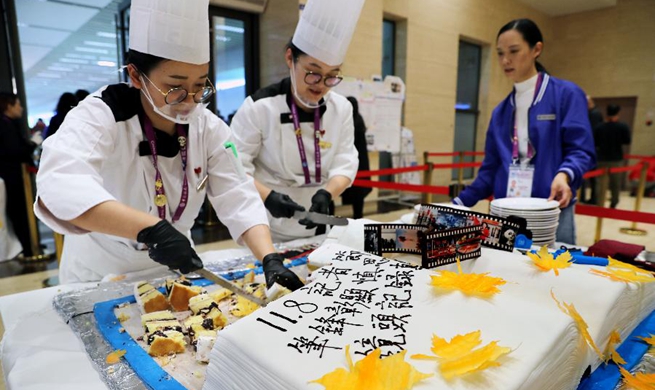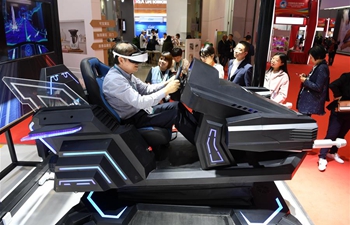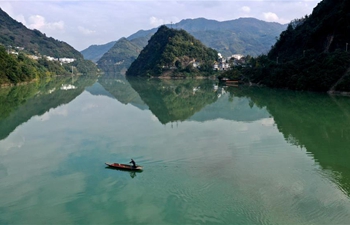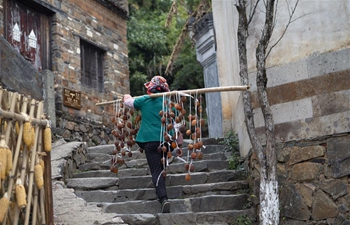by Jesse Wieten
AMSTERDAM, Nov. 8 (Xinhua) -- An innovation to tackle plastic pollution has become one of the highlights of the recent Amsterdam International Water Week.
The instrument, dubbed "the Great Bubble Barrier", is a bubble screen that will remove plastic from the canals and therefore prevent them from flowing through to the river IJ and the North Sea. It was made possible by the Amsterdam based start-up The Great Bubble Barrier on behalf of the regional water board and the municipality of Amsterdam.
The first bubbles of the Barrier were visible on Thursday in the Westerdok canal. A choir sang about bubbles and tens of guests drank alcohol free bubbles to celebrate the opening.
"This is a very important step in reducing the amount of plastic in the oceans," coinventor Philip Ehrhorn told Xinhua. "It is a lot easier to stop it at an earlier stage instead of in the ocean."
The tool works as follows. By pumping air through a tube with holes in it, which is located on the bottom of a waterway, a bubble barrier appears. This creates an upwards thrust, which brings waste to the surface of the water. By placing it diagonally in the waterway, the barrier uses the natural current to guide the plastic to the catchment system at the riverside. Both ships and fish can pass the Bubble Barrier, but plastic will be stopped.
The invention actually started around four years ago when Dutch students Saskia Studer, Anne Marieke Eveleens and Francis Zoet looked at the bubbles of a beer glass in a bar and thought they should do something with that. Ehrhorn, a German student, had the same idea. After he found out about the plans of the three Dutch girls, they decided to join forces in Amsterdam.
"It is the first step of many," Ehrhorn continued on the project. "First the different rivers and canals in the Netherlands, cities, industrial areas, ports. In the following years we will go to the rest of Europe, Asia and elsewhere."
Last month, Dutch organization The Ocean Cleanup of inventor Boyan Slat already launched the Interceptor, another autonomous system for collecting plastic pollution from rivers before it reaches the sea. They consist of floating barriers attached to processing plants, anchored to the river bed to catch plastic wastes.
Ehrhorn doesn't consider the other system as a competitor. "In the battle against plastic waste we should not talk about competitors," he said. "One solution will not clean up everything. The only similarity is that he is working in rivers now as well. The systems are different."
According to Bianca Nijhof, managing director of the Netherlands Water Partnership, the network of Dutch organizations in the water sector and the first point of call for anyone seeking Dutch water expertise, it is no coincidence that this invention and development started in the Netherlands.
"The Netherlands has to deal with the water for centuries, because of course part of the country lies below the sea level," Nijhof told Xinhua. "We have learned to live with water and have built a thriving society. It is a unique story we want to share and people from abroad like to know how we do it. We have the knowledge and experience. Not only about our famous dikes, but also on technology and innovative solutions."
"Our country is increasingly showing itself in innovations in the field of nature-based solutions," Nijhof said.
"The Bubbles Barrier is also such a nature-based solution," added Nijhof. "With air bubbles the plastic goes a certain way and you let nature work for you. That is a great export product for the Netherlands. Incredibly innovative. We will take it abroad."
The catches of the day by the Bubble Barrier in Amsterdam are cans, polystyrene, a pack of custard, a pen, a few boards and a lot of smaller grits - all rubbish that has been driven into the trap by the underwater screen of bubbles in the Westerdok.
"We are going to monitor all waste and make the data publicly available," Ehrhorn said. "Making visible what is in the water here. The Bubbles Barrier is a great tool to raise awareness for the problem."
